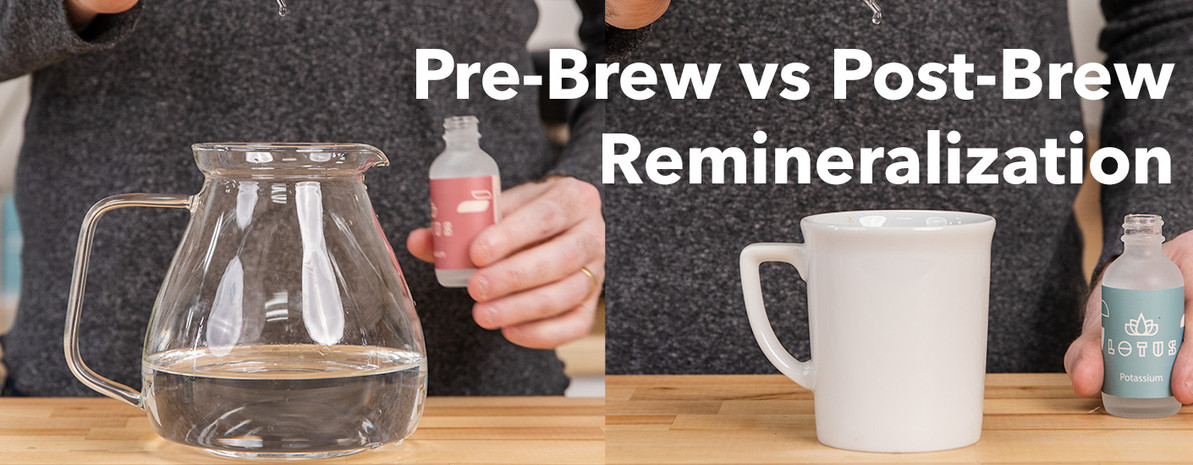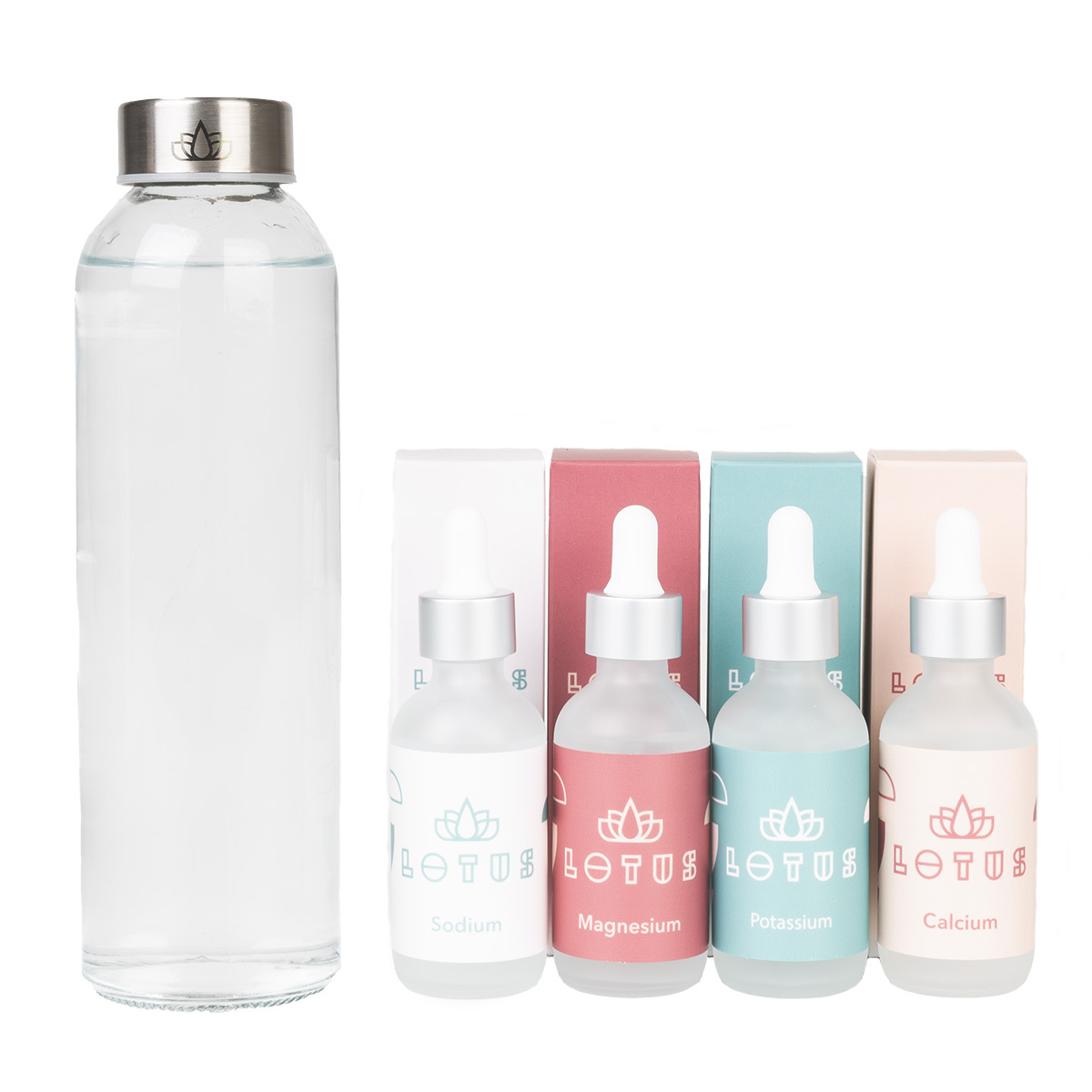Remineralizing Water For Coffee | Pre-Brew VS Post-Brew
Transcript
If you've spent any time experimenting with water composition for your coffee, or even noticed disparities between your tap and bottled water, then you likely understand the profound impact that hardness and alkalinity can have on coffee's flavor. And today, I'm not going to get into all the precise mechanics of why or how these minerals influence coffee flavor. But instead we're going to challenge the conventional approach to preparing coffee water, which normally involves adding mineral ions to clean water before the extraction process. Today, instead, we'll explore brewing coffee with pure water, followed by the introduction of mineral ions afterward, and then compare the resulting brews. I'm Ryan from prima and this is pre brew versus post brew remineralization.
The Role of Dissolved Cations in Coffee Extraction by Christopher Hendon, Leslie and Maxwell Colonna-Dashwood
For as long as mineral supplements for coffee have been around, people have been re-mineralizing deionized or reverse osmosis water for better flavor when brewing coffee. And that's because in the past, some research has shown evidence that certain ions are capable of interacting with certain flavor compounds during coffee extraction. In 2014, Christopher Hendon and Maxwell and Lesley Colonna-Dashwood published their study titled The Role of Dissolved Cations in Coffee Extraction, and in this study, the researchers were able to measure the binding energy of dissolved cations to lactic, malic, citric, quinic, and chlorogenic acids extracted during brewing, which are the major contributors to the overall flavor of coffee. The data shows a definitive interaction between these acids and the cations, but it does not in any way quantify this interaction in terms of extraction, yield, or even flavor perception. Hendon'ss team didn't brew or taste any coffee, and despite the good data on these interactions, the study in no way proves that mineral ions added to brewing water in normal amounts will have any impact on what or how much is extracted from the ground coffee, and that's where this experiment falls a little bit short.
Influence Of Divalent Cations On Extraction Of Organic Acids In Coffee by Tove Bratthäll
Fast forward to 2021. Tove Bratthäll of Umea University published a follow up to Hinton's research, titled Influence of Divalent Cations on Extraction of Organic Acids in Coffee, which will also be linked below in the description. Through the use of gas chromatography mass spectrometry, Cove's research focuses more on identifying the types and concentrations of organic acids present in coffee brewed with and without mineral ions, and the findings indicated that the presence of magnesium and calcium in the brewing water in normal amounts, say 100 parts per million each, does not substantially impact the extraction of lactic, malic, and citric acid, and ultimately, these results underscore the notion that dissolved cations primarily influence the perception of flavors in coffee rather than directly affecting the extraction of flavor compounds.
Here's a quote from Tove: “As organic acids are polar compounds and therefore highly soluble in water, they are extracted quickly during brewing, making it rather unlikely that their extraction is facilitated by ions. If calcium and magnesium ions indeed do increase the extraction of the acids, there should be a more pronounced difference in filter brews with a short brew time. Considering the estimation that 65 to 75% of the soluble material is extracted within the first two minutes and 80% after five minutes. It is reasonable to conclude that all acids available for extraction are removed from the coffee in the early stages of brewing, and if anything, the cations would be more likely to aid the extraction of compounds of lower solubility.”
Prima's Experiment
Anyways, there is a lot more data to look at in these studies, and I encourage you to read both of them. But for now, we're going to move on to our own experiments. For a long time I have been adding mineral ions like this Lotus Water in front of me here directly to my brewed coffee, mainly because I'm always looking for ways to simplify my brewing routine, but also because I just like the way it tastes. And here at Prima and at home, I brew coffee with pure deionized or reverse osmosis water taste, then utilize the hardness or alkaline ions that I think I need if anything. And after enough time you can learn the effect that each drop of those mineral ions has on flavor and start customizing every cup in half the time it takes to measure out the exact amounts beforehand.
So we decided to put this to the test. And here's how we did it. We use two Bonavita metropolitan brewers, which each brew the same volume of water within ten seconds of each other and within a yield of just ten milliliters or less. These auto brewers allow us to brew two identical cups simultaneously, and arguably do a better job at brewing than humans do anyways. So here's our recipe. It's a 50 gram dose, 800ml of water input grind setting eight on our Ditting 807 lab sweet ESP and a brew time of about 4.5 minutes. Three different coffees were used for the experiment from two different roasters, and two of the coffees were very light roasted and one of them was near the beginning of the dark roast spectrum.
Matching mineral iron concentrations in each sample was a crucial first step, and definitely the most difficult part of this experiment. We first measured the yield of a brew, which came out to 675 mls, and then we input that number into Lotus's recipe calculator online to find a proper concentration for the simple and sweet recipe, with our concentration determined for the post brew sample. We then had to find a way to add the exact same concentration of minerals into the pre-brew sample. And thanks to some very helpful insight from Nick Chapman at Lotus Coffee Water, we discovered that we could simply double our 675 mil recipe, both the amount of minerals and the water to scale that 675 milliliter recipe to 1350, and then essentially pour 800ml of water out of it for our pre brew sample, ensuring that both samples had exactly the same concentration for each experiment, we used a different coffee or a blend of coffees and samples were tasted and compared by several members of the Prima team. Consistently across all samples, we found that extraction yield remained the same no matter if minerals were added to the brew water or directly to the brewed coffee. However, post brew remineralization was almost always the more acidic and bright tasting sample of the two and coffee three was the exception here, with only slightly more perceived acid in the pre-brew sample. But as a general rule, pre brew re mineralization almost always resulted in a softer, more balanced flavor profile. Adding minerals post brew in some cases seems to increase the perception of acidity to the extent that I think most people could detect a difference.
So to reiterate, in terms of extraction yield, we found no significant difference between a pre brew and a post brew re mineralization approach. The Bonavitas did their job extremely well and every brew was virtually identical in extraction yield, regardless of when the mineral ions were added. Now keep in mind for this study to be definitive, it would need to be much more extensive. And I totally recognize that we need lots of coffees, lots of tasters, different mineral ion combinations, and lots and lots of samples, of course, but we couldn't do that. But for practical purposes, I feel confident in saying that having mineral ions post brew is perfectly legitimate, and in some cases offers a more desirable flavor profile.
What Does This Mean For You?
So what does this mean for you at home? Look, I think the most important thing here is that you are enjoying both your coffee and your process for making it. If you're burned out by some increasingly complex morning routines, you're doing it wrong, and you definitely don't need to add new variables. Coffee should contribute to the enjoyment of life, and this process of adding individual minerals to a cup of coffee that seems convoluted to you. Then it is, and you shouldn't do it. But for those of us who do have fun optimizing water composition for that extra degree of excellence, the post brew method is super versatile and offers a more tailored approach to dialing in each coffee. Instead of adhering to a single water recipe, we can customize every cup and learn how each individual ion affects our flavor perception. So with that, go and try something new with your water this week. Or don't. And come back and report in the comments what you find. I'm Ryan from Prima. Happy brewing.




